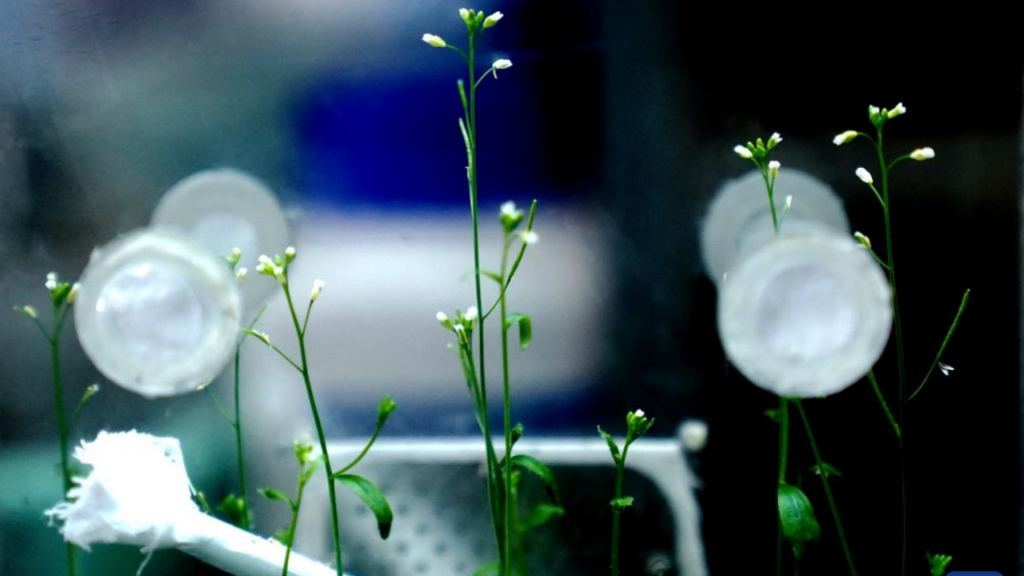Rice is one of the world's staple crops. It is regularly eaten by more than half the world's population. And now, it's been grown in microgravity, on board the newly launched Chinese Wentian space laboratory.
Wentian launched in July and joined up with the Tianhe module of China's new space station. Its original complement of eight experiments included one that attempted to grow rice in microgravity.
Rice typically grows to 3-4 ft over four months, and the stalks on Wentian have not been able to complete their entire maturation cycle since the experiment started in July. However, they seem to be on track compared to their Earth-bound counterparts.
There were actually two types of rice launched as part of the experiment. A tall shoot variety reached almost 30 centimeters in the first month of growth, and a dwarf variety reached around 5 cm. Both of these growth amounts are on par for these particular rice varieties on Earth.
Rice isn't the only thing in the experiment, though. Scientists added Arabidopsis thaliana. It's a common flowering plant typically used to study genetic mutations, which can be especially helpful when carrying out an experiment in space.
Rice and mutation studies both have a long history in spaceflight. The Apollo 11 astronauts ate freeze-dried chicken and rice during their journey to the moon. And any space-based farming effort will surely include rice. So this is a step in the right direction.
This also isn't the first time China has sent rice into space. Some hitched a ride on the Chang'e 5 in November of 2020 on its ride around the moon. Other crops have ridden with other Chinese spacecraft as well. These studies focused on improving the yield of these crops, as rice that is expected to the radiation environment of space have higher yields once planted back on Earth. This burgeoning industry has seen more than 200 types of crops modified in this way, and experiments are continuing.
This isn't the first time rice has been successfully grown in space. A team of students from Indonesia tested the effects of growing rice in microgravity on the ISS back in 2016.
For now, the experiment continues apace, and the scientists running it hope to get seeds that they can bring back to Earth to study if there were any significant differences having been grown in microgravity. Assuming there isn't, these experiments could point to a bright future in space for one of the world's most important crops.
Learn More:
China Daily - Space station rice tests show promise
UT - China has Added a Science Module to its New Space Station
UT - China Launches the Core Module of Its New Space Station
UT - Shenzhou-14 Astronauts Begin Their Mission of 6 Months in Space
Lead Image:
Workers removing the results of experiments from a returned prototype capsule in May.
Credit - Su Dong / China Daily
 Universe Today
Universe Today


